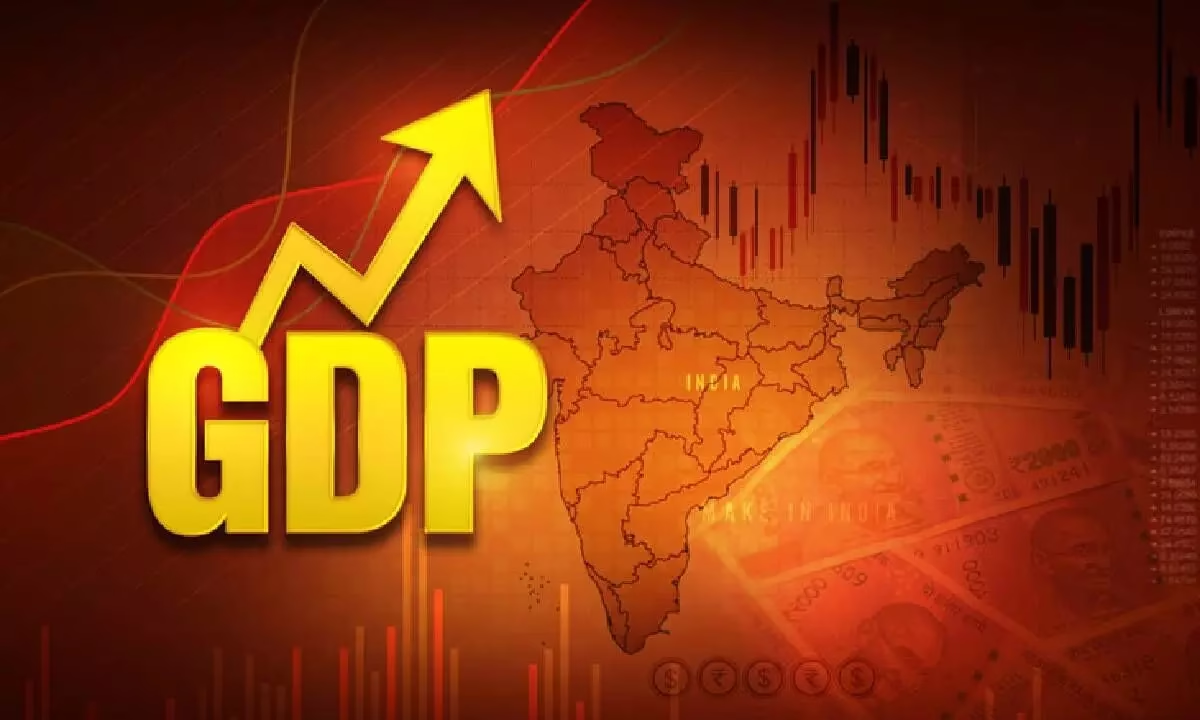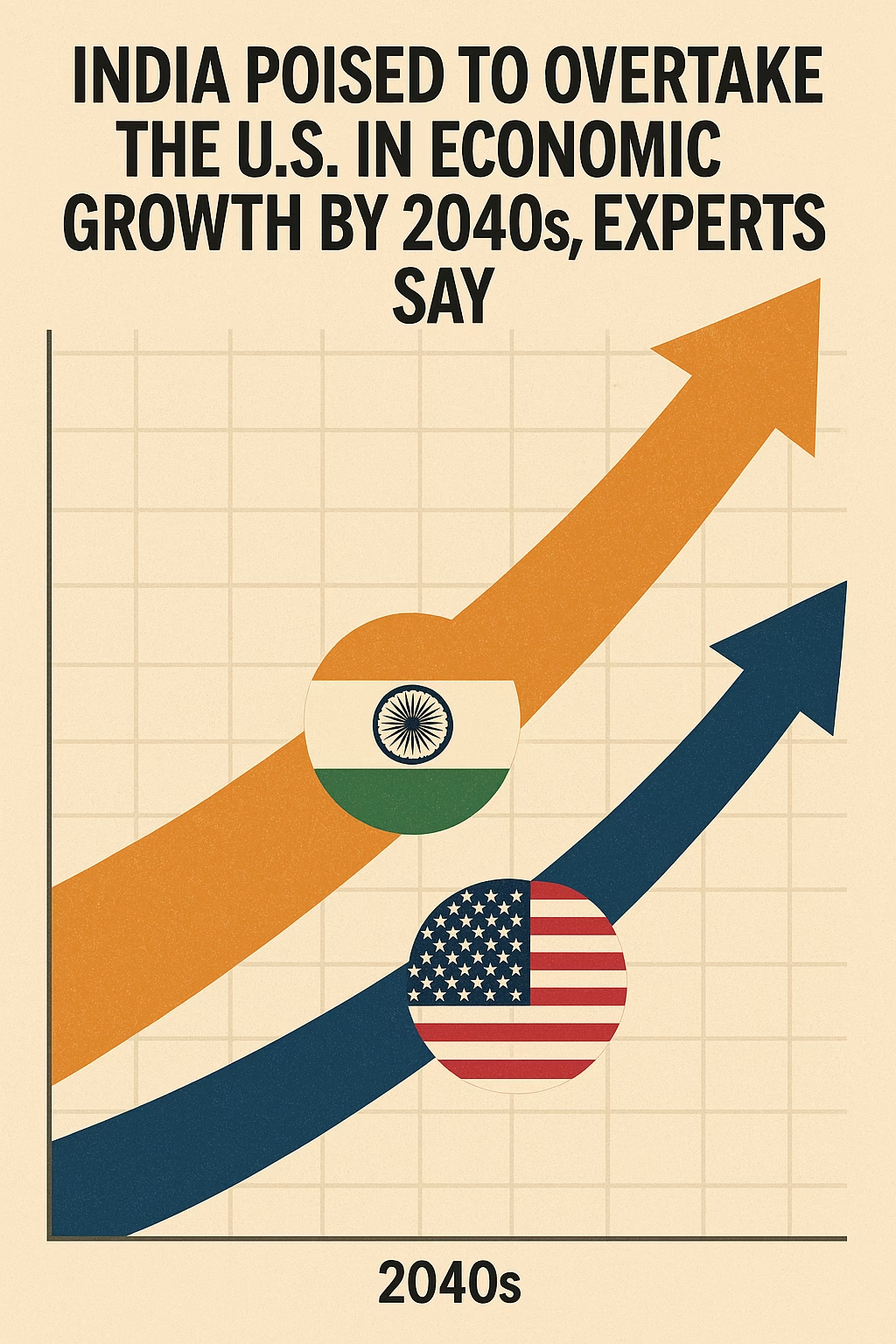
The economic rise of India continues at a remarkable pace, leading analysts to forecast that the South Asian powerhouse could surpass the United States in GDP size by the mid-2040s. While India’s economic journey has been marked by impressive growth rates, infrastructure development, and demographic advantages, a variety of factors both at home and globally are playing into this projection
1. Population Growth Fuels Economic Expansion
India, with over 1.4 billion people, is already the world’s most populous country, overtaking China in recent years. With a median age of just 28, India’s workforce is significantly younger than many other major economies, including the U.S. This large and growing working-age population is expected to provide a continuous source of labor and consumption, driving demand for goods and services, especially as the country urbanizes further.
According to the United Nations, India’s population is set to increase by an additional 300 million people over the next few decades, making it the largest consumer market in the world by 2050. This demographic trend is seen as a key advantage in fueling both domestic growth and global economic influence.
2. Economic Growth Trajectory: India Outpacing the U.S.
India’s GDP growth rate has consistently outpaced that of the U.S. over the past decade, despite global economic challenges like the COVID-19 pandemic. With an average growth rate of 6-7% annually over the last few years, India’s economy is projected to continue expanding at a rapid pace. By comparison, the U.S. economy has grown at around 2-3% annually during the same period.
India’s GDP, currently around $3.7 trillion, is expected to grow to $10 trillion by the early 2030s and could surpass the U.S. in size by the 2040s if growth continues at this pace. This would mark a historic shift in global economic power, especially given that the U.S. remains the world’s largest economy at $26 trillion.
Experts point to India’s robust economic sectors, including technology, manufacturing, and services, as key drivers behind this growth. India’s burgeoning middle class, now estimated at 350 million people, is contributing to both domestic demand and a growing export sector.
3. Technological Innovation and the Digital Economy
One of the most significant catalysts for India’s rapid economic rise has been its thriving tech sector. With cities like Bengaluru and Hyderabad becoming global hubs for software development, artificial intelligence (AI), and digital services, India is poised to become a key player in the Fourth Industrial Revolution.
Indian companies such as Tata Consultancy Services (TCS), Infosys, and Wipro are already among the world’s largest IT service exporters. Moreover, India’s startup ecosystem is booming, with sectors like fintech, e-commerce, and electric vehicles seeing exponential growth. The Indian government has also rolled out initiatives like “Digital India” and “Startup India,” further accelerating the nation’s transformation into a global technology leader.
According to a report by the World Economic Forum, India’s tech sector is expected to contribute over $500 billion to the GDP by 2030, positioning the country as a tech superpower in the coming decades.
4. Infrastructure Development and Foreign Investment
The Indian government has placed heavy emphasis on improving the country’s infrastructure, from modernizing its transportation network to investing in clean energy. The National Infrastructure Pipeline (NIP), worth $1.4 trillion, is expected to be completed by 2025, with ambitious projects to build new airports, highways, and smart cities. These infrastructure upgrades are expected to support business growth and attract further foreign direct investment (FDI).
In addition, India’s shift toward renewable energy, with major investments in solar and wind power, is expected to reduce the country’s reliance on fossil fuels and provide a sustainable growth model. These initiatives will position India as a key player in the global green economy.
Foreign investment in India has surged, with multinational companies like Apple, Amazon, and Tesla expanding operations in the country. The country’s growing importance as a manufacturing hub—especially in industries like electronics and electric vehicles—has led to a surge in FDI.
5. Challenges on the Road Ahead
While the economic forecast for India remains optimistic, several challenges could potentially impede its trajectory. India still faces significant income inequality, with over 270 million people living below the poverty line. The country’s education system, while improving, still struggles to keep up with the demand for skilled labor, particularly in high-tech fields. Moreover, political instability in certain regions, along with complex bureaucratic hurdles, could slow down some of the progress.
India’s environmental issues, particularly air pollution, water scarcity, and deforestation, also pose risks to long-term sustainability. Climate change could exacerbate these problems, creating potential disruptions in agriculture and other sectors.
Additionally, the country’s dependence on oil imports and other energy-related challenges could become major hurdles as global energy dynamics continue to evolve.
6. A Shift in Global Power Dynamics
As India accelerates its rise, it is also strengthening its geopolitical position. With increasing military and diplomatic engagement in international forums, such as the Quadrilateral Security Dialogue (Quad) with the U.S., Japan, and Australia, India is positioning itself as a counterbalance to China in the Indo-Pacific region.
Moreover, India’s growing economic influence could allow it to reshape global trade, particularly in sectors like technology, pharmaceuticals, and manufacturing. India is already the world’s largest producer of generic drugs, and its exports to global markets continue to rise.
The potential shift in the balance of economic power between India and the U.S. would likely lead to a rethinking of global economic policies and alliances. India, with its democratic values and fast-growing economy, could become a central player in shaping the future of global governance.
Conclusion: The Road Ahead for India
While it’s still early days, many economists believe that India’s growth trajectory will continue to gather momentum in the coming decades. By 2040, the country could very well be the world’s largest economy, surpassing the United States, especially if it maintains its growth rate and successfully tackles some of its internal challenges.
For now, all eyes are on India as it strives to capitalize on its demographic advantages, technological innovations, and infrastructure investments. The next 15 years will be pivotal in determining whether India can not only overtake the U.S. in economic size but also establish itself as a dominant global power.



